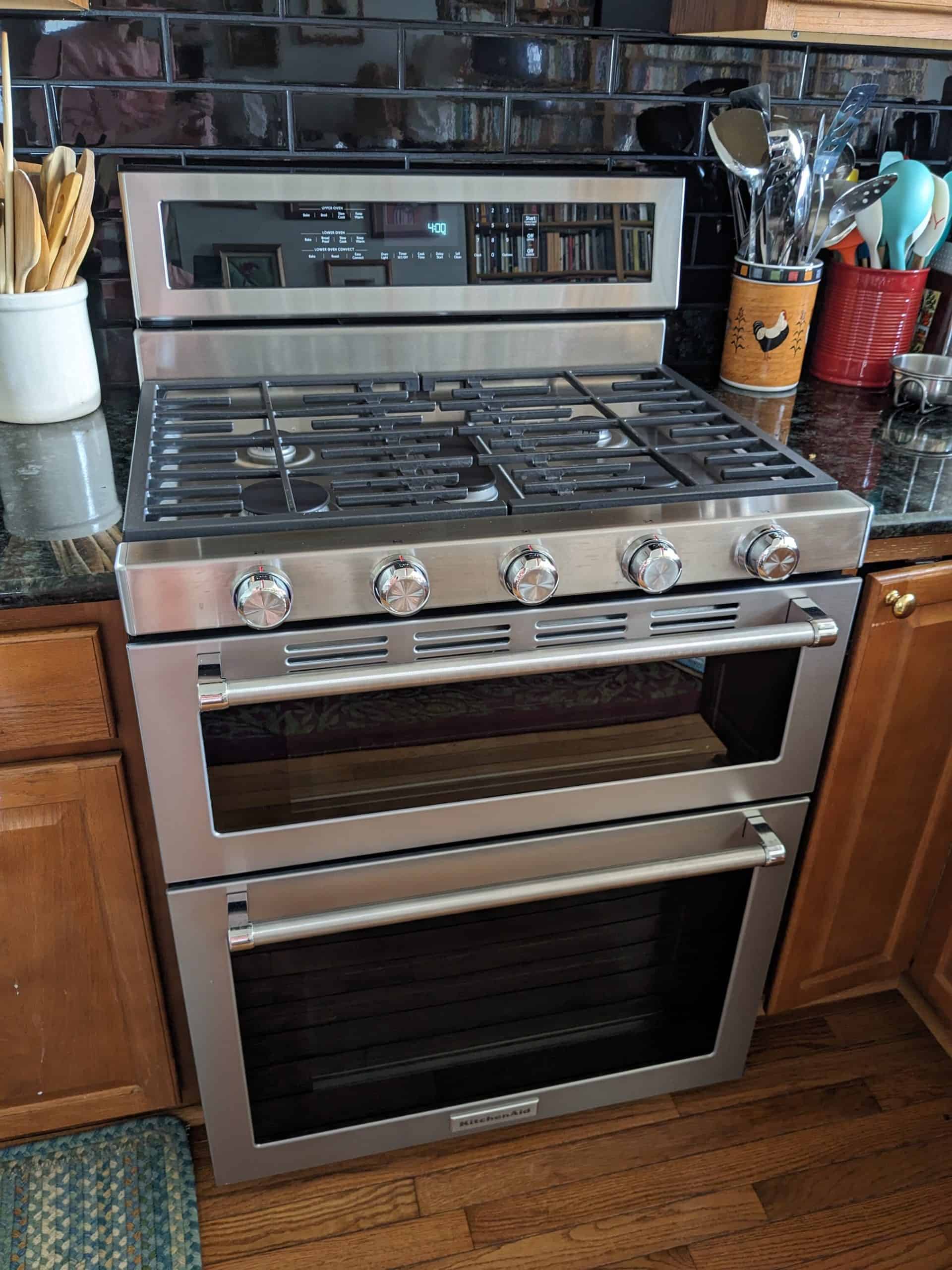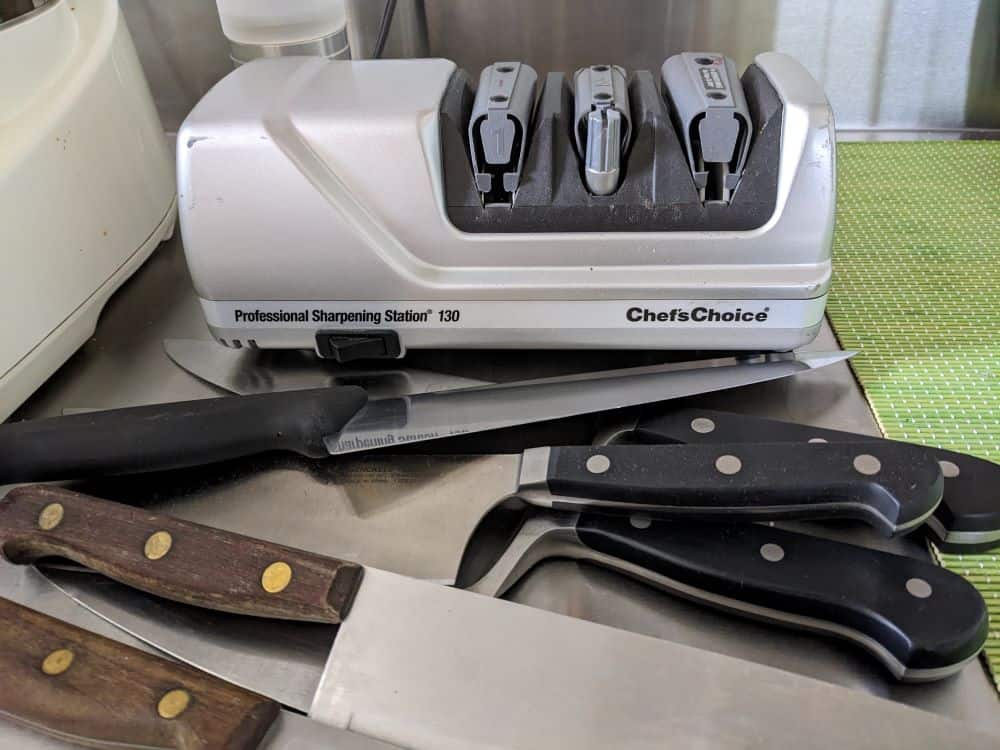If you’re like me and you didn’t play games as a child, picking up a controller can be a daunting experience. I could find the window defogging button on a rental car faster than the L1 button on a controller. The flashing colors and explosions of light on the screen were as inscrutable as a swarm of fireflies.
Before I began my video game journey in earnest, I dabbled in popular games such as Fortnite Battle Royale and Overwatch. These games seem beginner-friendly; you aim and pull the trigger! How hard can that be? But I was cannon fodder. DOA. Trash. I never had fun, so why keep playing? And if you don’t keep playing, you don’t progress enough to understand or overcome your obstacles.
I don’t doubt that some beginners can jump into a popular game and learn to compete in a matter of months, but those persistent individuals are in the minority. Most of us need to start with the basics. Acquiring controller dexterity and learning fundamental video game skills means starting simple, away from highly competitive, elitist games, and then progressing to complex, difficult gameplay.
This article outlines basic video game skills and provides game recommendations to facilitate learning those skills. The information here applies to fighting games, action games, RPGs, shooters, and almost any game where players control a character who fights enemies—it won’t apply to non-violent puzzle games, text or graphic adventures, rhythm games, racing games, or the like.
Familiarity With Game Math and Systems
Games provide players with the ability to cultivate and transform their character through weapons, gear, passive skills, potions, crafting, and other systems. Behind the pretty graphics and user interface, games are performing math. Players’ choices become inputs in equations that determine health, damage, and other vital character or skill stats.
When you make smart choices and the game’s math works to your advantage, each push of a button or pull of a trigger has the greatest possible impact. In RPG games with extreme user options and rich, elaborate systems, skills can do damage many orders of magnitude higher than their base numbers. Learning how to influence the math is the most basic, yet highest-order, skill a player can have.
If you don’t understand a game system or how to use it, look it up online. A game with enormous, complex systems can seem like a wormhole. The last thing you want to do when you’ve turned on your PS4 and settled into your sofa is reach for your laptop to spend time poking around a forum, but doing it early on primes your play for success. User forums (such as this one for a specific class in Borderlands 2) are often the best resource for finding game mechanics and systems information. If you don’t begin investigating early, play can quickly become frustrating, bewildering, or repetitive as you backtrack to cover things you missed.
The more you understand a game’s systems, the better you’ll be able to plan your progression. Having a goal for your character and figuring out how to get there is one of the most satisfying parts of any game. I can’t tell you how many players you see in Fortnite: Save the World who have never touched their survivor teams and can probably never compete in the final Twine Peaks zone, or how many Elder Scrolls Online players couldn’t tell you where the stats on their character sheet came from. These players miss out on a heaping helping of power and fun the game provides, and they fail to meet the performance baselines the game expects for players competing at their level.
Position, Range, and Incoming Damage
When a boss or enemy player is in your face spewing damage, healing or getting out of the way take priority—at that point, you’re lucky if you don’t lose. Positioning in video games is everything, and it isn’t just about dancing out of area-of-effect damage. Positioning your character means having an advantage before a fight begins.
First, know the terrain. Is there cover? Are there changes in elevation? What map features can be used to your advantage? Where is the enemy now, and where might he be headed? Cultivate awareness of your surroundings and practice precision with your movements. Nothing will get your character killed faster than waltzing across a map like it’s a carnival.
Positioning is also about damage and range. Every skill and weapon has a range. Depending on the game you’re playing, it can be difficult to tell if your skill or weapon successfully hit an enemy. Gun damage often falls off and becomes weak at an improper range. Melee damage happens at close range in a lightning-fast blur. Getting a grasp on the range of skills and weapons in a game is crucial to figuring out how best to position your character to avoid damage and gain the upper hand. How can you know where you’re safe if you don’t know how far a sniper’s bullet will travel, and how can you expect to use a shotgun if the enemies are on the other side of an open field?
Observation, memorization, and orientation are the key to positioning. Watch the map and terrain; the enemy and his weapons; and the effects of your weapons and skills. Patterns will begin to emerge. An experienced player knows every stone and tree in the map and can guess the enemy’s movements. He anticipates incoming damage and uses his movements to keep himself safe, to deceive, or to give his weapon the punch it needs. In a game conflict, the player who knows the terrain and understands the enemy’s weapons and position in relation to his own is usually going to win, regardless of the firepower or size of the enemy force.
This all sounds rather vague, mystical, and difficult to achieve, like walking silently over fallen leaves in the woods. However, as a beginning video gamer, my positioning problem was dead simple. I would move my character onto unexplored ground, and bullets or arrows would fly at me. Instead of retreating to the safe place I’d been a moment before, my overwhelming instinct was to advance—to scurry forward like a mouse along the wall, reposition so that I could identify the enemies that were blasting me, and find a new piece of cover ahead.
We’re always moving forward in video games, on to the next thing, and it takes a lot of presence of mind to move the stick back. Moving forward surrounds you with enemies. That’s the only certain effect. Retreat! I needed to retreat, not advance! I still occasionally catch myself dying from this idiotic error, and it’s more common than you’d think. You’ll often see players advance and perish in PvP games and games of all stripes when they may have had a shot if they’d retreated and reevaluated. When in danger, retreat!
Aiming and Targeting
All games have some kind of system that allows players to control the direction of their skills or weapon. Some games have targeting and locking-on, a kind of aiming system whereby the game allows players to ‘select’ an enemy, cycle through individual targets, and then automatically direct skills or gunfire at that target. Other games have free aim, where bullets or spells are simply directed at players’ crosshairs; more often, games with free aim have subtle aim-assist whereby the game slightly snaps the crosshairs to a target. Many games use a hybrid of both systems, allowing players to both aim and choose targets. Much has been written about the history and nuances of video game aiming systems, but fundamentals of targeting and precision hold true across game types. The important thing for players is to identify and master the aiming or targeting system a game utilizes.
Players must gain confidence in the way their weapon or skills behave within the game’s aiming system. Will a skill damage multiple enemies standing near each other, or only the targeted enemy? If a targeted enemy moves, does the targeting break, or will the skill track him and hit? Some enemies take priority over others—fluency with identifying and switching between enemies is crucial. A healer, for example, can keep his team alive indefinitely and therefore should be eliminated first if possible. “Adds,” the reinforcements that a boss summons, sometimes need to be killed before the boss can be damaged. Other times they need to be ignored while players focus on the boss alone. Games present these and other types of aiming and targeting challenges for players to solve. If you can’t control where your skills or weapons are landing, you can’t sequence your takedowns in the order a game demands.
The final piece of aiming is those god-tier video game skills, speed and precision. Anyone can tell you that fast, accurate aiming is contingent on eyesight, reflexes, and a gentle yet obedient thumb. These things improve with time and experience, but there are ways to practice that will bolster your performance. The key to aiming, like positioning, is anticipating the enemy and his movements. Keep your target reticle or character pointed at all times in the direction an enemy may appear. Always aim to be ready to shoot or use your skills, whether you’re walking into a room full of goblins or waiting for an enemy player to emerge from behind a busted sofa.
Keeping steady aim is easy if you stand stock still and take your time with the thumbstick, but that will get your toon killed. The challenge is to keep your aim true while being evasive, constantly moving, maneuvering through the map, and positioning yourself advantageously. Practice keeping your target steady on the area most likely to get a headshot or hit an enemy while you jump, dash, sprint, and “strafe.” In shooter games, “strafing,” or moving side to side, makes it more difficult for an enemy to hit you. He must continually adjust his aim to the position you’re likely to be in the next second. If you move forward and backwards, rather than side-to-side, he can aim in pretty much the same place and easily hit you. If you can hit the enemy while making it hard for the enemy to hit you, victory’s in your sights.
[adinserter block=”1″]
Pressing Buttons
All games require players to press buttons accurately. The difficulty of that endeavor depends on the game. Some games require little more than trigger pulling, but others have downright torturous controller layouts. In those games, players’ fingers sweep across the controller in a desperate dance to perform the game’s complex commands in good time. Take a look at these particularly taxing controls for Resident Evil 5, for example. In order to turn or run, you have to press x and use the left stick. X is also used to reload. L2 is used not only to equip an item, but also in conjunction with R2 to perform an attack.
Some games provide multiple controller layout options in the settings, allowing players some choice in the contortions their hands will make. If you plan to spend a lot of time playing console video games, we here at Co-op Gaming Dot Info recommend you buy an elite controller. Acclimating yourself to paddles rather than buttons will give you an enormous advantage when it comes to accurately pressing buttons.
I never understood how truly awful I could be at the simple act of pressing a button until trying the training in Dragon Ball Xenoverse 2. When it comes to button speed and control, fighting games are perhaps the most demanding. They require total accuracy and impeccable timing during insanely long button sequences. One mistake or second of hesitation makes the sequence fail. This Xenoverse training has players performing an 11-button sequence, but a Street Fighter 4 player managed a 247-hit combo. Two hundred and forty seven buttons pressed in a timed, accurate sequence—that’s no small feat!

Seeing a game fail to respond to your inputs can be incredibly frustrating. It’s one of the most common tropes in gamer rage freakouts; “Arghhh,” the gamer screams, “I hit the button, why didn’t it woooork!”, and then an innocent LCD screen is smashed. Beginners should keep two things in mind. First, be humble. Until you can complete something like the Xenoverse training in one go without repeating exercises, you don’t have total accuracy and control over your timing and button presses on the controller. Almost nobody does. Second, many games have a built-in mechanism to keep players from mindlessly mashing buttons. “Animation priority” means that another button input won’t register until the animation from the previous skill or button input is complete. Games with animation priority include Monster Hunter and Dark Souls. These games teach perhaps one of the most important video game lessons—slow down, be deliberate, and carefully observe the effects of your skills and buttons. Learning to make your inputs consistent is a critical gaming skill.
Health, Resource, and Cooldown Management
Any game in which players fight enemies includes a health bar. When a character’s health reaches zero, he dies. Some games include other resources such as mana (the magical juice used to cast special abilities or spells) or stamina (physical power or endurance). When a character runs out of mana, he can’t cast a spell; when he runs out of stamina, he can’t perform feats such as blocking or sprinting.
[adinserter block=”1″]
In RPGs, a player’s choices in the game’s systems can alter his resource pools. He can make his mana regenerate more quickly or give his character extra health. Whether you have multiple resources that can be altered or just a health bar with a permanent number, much of your playstyle will be determined by your available resources. Knowing how fast you can recover and what you can recover from determines whether you have to avoid all damage at all costs or can absorb some damage and play close to the action. Knowing you’ve recently blocked an attack and used a great deal of stamina means you won’t be able to block again or sprint through damage to the next location.
In some games, skills have “cooldowns.” A cooldown is a period of time that a game makes players wait after they use a skill before they are able to use it again. Like with resource pools, cooldowns can be shortened or altered through some game’s progression systems. Awareness of cooldown timing means a player won’t use a skill if he knows he’s likely to need it in the next moment of the game. On the other hand, if an enemy is in a compromised position, it can be smart to ‘dump’ your skills and use up all your resources in order to maximize your damage and ensure the enemy’s death. (Or in a tough situation, it can pay to dump resources or cooldowns in order to avoid death yourself.)
The ultimate challenge is to adapt your play patterns to the state of your resources and cooldowns. This type of strategizing is similar to playing poker. Having full resources and all your skills available is like a strong hand. It’s easy to play aggressively. If you’re out of mana and your skills are on cooldown, it’s a terrible hand—time to fold, retreat, and regroup. If you haven’t a clue about the state of your resources or cooldowns, it’s like playing poker without looking at your cards. It might be fun, but nobody who wants to win would do it.
What advice or skills helped you the most when you were learning to play video games? Let us know in the comments!
Learn to Play Console Video Games With This Sequence of Games
We chose these games because they provide simple, accessible experiences and plenty of fun and achievement for new players. You’ll get better at any game by sitting down and taking the time to play, but many games don’t leave room for inexperienced players or those with little patience. We’re suggesting these games because they probably won’t frustrate you (at least at first.)
Co-op alert! All these games can be played with a partner provided you’re playing on two Playstations. See our gamesharing guide for more info.
Divinity: Original Sin 1 or 2
If you’ve genuinely never played console games before, start with a game that doesn’t require any controller dexterity. Divinity is a turn-based role-playing game that includes most standard video game concepts. The key word is turn-based: everything in Divinity occurs at a glacial pace, where each character is given a ‘turn’ to plan his movements and actions. This pacing gives beginners all the time in the world to study and comprehend game systems.
Character progressions are easy to see and plan. If that’s too much, the game also provides pre-made characters that are relatively powerful, allowing players to see the sort of skills that comprise an effective character.
Beyond that, positioning takes center stage in Divinity. Differences in elevation confer advantages, and skills that thrive in choke points are worthless in open spaces. Isolating enemies leads to certain victory. The same group of enemies that crumple in an ambush will slaughter you if they’re the ones ambushing. The concepts that let players succeed at Divinity are, in many ways, the same ones that help players win in Call of Duty.
Path of Exile or Diablo 3
Few video games are turn-based—most are real-time. After Divinity has schooled you in video game basics, try Path of Exile or Diablo 3. These games have the same isometric graphics as Divinity, and the mechanics are similar. You’ll still rely on skills, targeting, positioning, and resource management, and you’ll need to plan your character’s progression in order to succeed. The key difference is that PoE and D3 are action RPGs, meaning that everything players performed during their turns in Divinity needs to happen in real time. Think of it as “graduating” to action—all the same concepts apply, but players must analyze the situation and apply their skills at lightning speed.
PoE and D3 have similar gameplay, and both are gentle on low-level beginners. However, PoE is the richer, more complex game. Its has hundreds more hours of content than D3, and its bosses and map challenges are tougher. Its game systems and character design are more elaborate, flexible, and demanding than D3’s. PoE will challenge you over and over to be a better player and make smarter choices, and it’s free to play. If you want to take the time to enjoy your journey and get deep into a game, we recommend PoE, but if you’re eager to launch past basics because there’s another game you’ve been dying to play, D3 may be the choice for you.
Borderlands 2, Fortnite: Save the World, or Overwatch
If you play through PoE or D3 and can dominate the highest levels, you’re gained an incredible amount of speed, reflexes, controller proficiency, and knowledge of the way games work. You’re ready to move on to a first-person shooter. Your next challenge will be acclimating to the limited field of view, need for precision aiming, and punishing consequences of taking damage in these games.
Not all first-person shooters revolve around aiming. There are a great number of games that include skills in addition to gunfire. Borderlands 2 is a lot like Diablo 3. There are character classes and skills, and there’s game-changing equippable loot: shields, class mods, grenade mods, etc. At the beginning of the game, you won’t be tossed into a brutal gunfight where you need to take cover and make headshots. Instead, beasts charge from far-off distances while tossing a few slow-moving, easy-to-track projectiles or doing no damage at all. Even if you don’t feel like you could hit the broad side of a barn, you’ll be able to take down these slow-moving monsters and prepare yourself for the bandits in the next town.
If you’d prefer to play with others on a team, Fortnite: Save the World is a winning option. The game includes many RPG elements, with character classes, powerful skills, and game systems that buff or change your hero’s stats and playstyle. In high-level missions, resource management and positioning are vital to success, but at low levels, zombie enemies are slow and weak. Like the other games on this list, Fortnite: Save the World’s difficulty progresses at slow and steady pace. New players have ample opportunities to learn, practice, and succeed. The building system is intuitive and gives new meaning to “taking cover.”
If you’re more interested in PvP, Overwatch is the game to try. Like Borderlands 2 and Fortnite: Save the World, Overwatch includes skills in addition to gunplay. The unique character classes give players freedom to determine how much they’ll rely on their gun to do damage. Torbjorn, for example, creates and repairs turrets in addition to creating molten pools of slag. Reinhardt gets a gigantic shield and a hammer. Positioning and teamwork are crucial to success across all classes. Players are matched with others with the same skill rating, so new players can compete and contribute. Plus, newbies can familiarize themselves with the classes and skills and learn at their own pace in rotating PvE modes.
Monster Hunter: World
This game is much harder, even at first, than any of the previously mentioned games. The same concepts apply, but players take on vicious, gigantic, powerful beasts instead of packs of weak mobs. Resource and cooldown management are crucial to make it through long engagements. Weapons have complicated mechanics—they’re as difficult to learn as they are to execute on a raging monster. You’ll need to be quick on your toes and have great positioning and movement skills just to survive.
MH:W introduces many concepts from more difficult games, including combos and animation priority. However, players progress at their own pace. Even at the lowest levels, they’re presented with tons of quest options through the bounties and expeditions—you can “hunt” the same low-level monsters over and over as you memorize combos and figure out timing and defense. If you have a mind for gear and the patience to practice and experiment, you’ll be downing gigantic beasts in no time.






